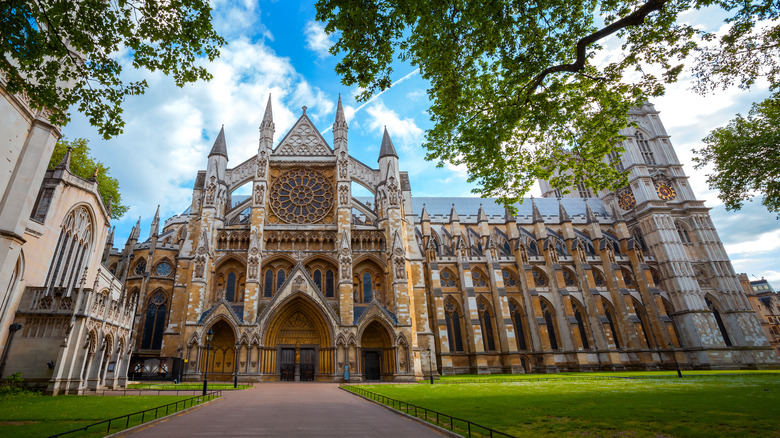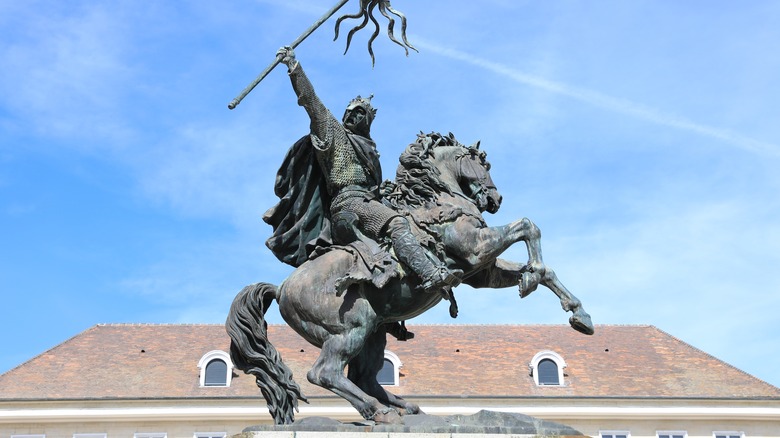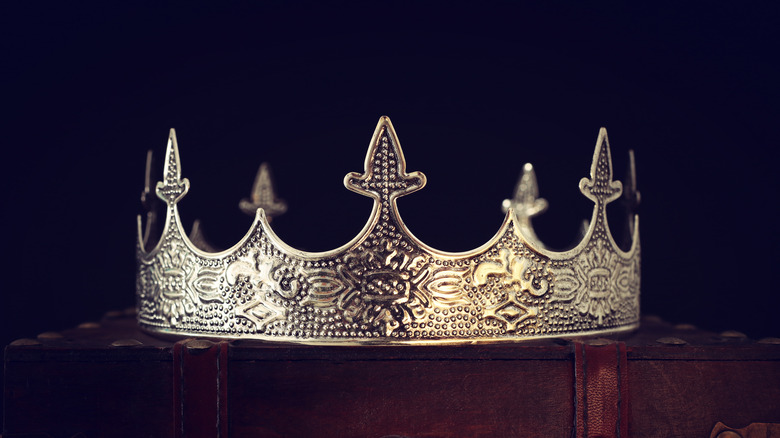What Was The First Coronation Held At Westminster Abbey?
English speakers might not realize that when they're speaking English, they're also speaking a bit of French. About 7,500 very common English words come from French, like existence, evidence, opportunity, association, easy, air, pain, music, debt, chair, blue, face, and more obvious words like rendezvous, nonchalant, and naïve. This has helped grant English a very dense, rich vocabulary and also makes it easier to casually order croissants and baguettes — two very obvious French loanwords — on a visit to Paris. And if you're wondering how the Francophone world oozed its way into English, a fundamentally Germanic language, then look no further than William the Conqueror, the first king crowned at Westminster Abbey in 1066 C.E.
Born in 1028 C.E., William the Conqueror — originally known as William the Bastard because he was the illegitimate son of Duke Robert I of Normandy — rose to power within French Normandy while eyeing the throne of England across the English Channel. He took an army across the channel in 1066 to claim the English throne, saying that the English king Edward the Confessor promised it to him. William went head-to-head in battle with Harold Godwinson, England's last Anglo-Saxon king, whose exhausted army had traveled 250 miles south in nine days to face William after defeating the Norwegian king Harald Hardrada. The French-speaking William won the Battle of Hastings, became king of England, and held his coronation at the same Westminster Abbey that stands to this day.
An inauspicious first coronation
Readers might have fun imagining what it was like on coronation day for William the Conqueror. He was a conquering military leader in a country that didn't speak his language. His French-speaking Norman troops intermingled with local, subjugated English-speaking troops, and no one could understand each other. The public and aristocracy must have been split, too: for and against, English- and French-speaking, supportive and resentful, etc. And maybe at some point a Norman pulled a triangular piece of flaky bread out of his bag, held it up to an Englishman and asked, "Croissant?," and eventually — all thanks to that tasty pastry — it all worked out in a frenemy kind of way.
All jokes aside, the first coronation at Westminster Abbey did indeed involve more than a bit of tension on both sides. It took place on Christmas Day, 1066. Bishops speaking both English and French turned to the Westminster crowd and asked them if they'd accept William as their king. Folks started cheering, and William's troops outside got nervous. The troops apparently didn't check to see what was going on inside, made some absurd leaps of judgment, and started setting fire to nearby buildings to, let's say, torch the English. Spectators inside Westminster panicked and raced out, and William finished getting coronated with no witnesses except the clergy conducting the ceremony. All in all, it was a pretty dumb and inauspicious first coronation at Westminster.
A crown of some type
At present, British coronations have evolved into very elaborate affairs with lots of ritualistic artifacts: the coronation chair, some holy oil, a special event invitation, a music playlist, and much more. We don't know any details of this type about William the Conqueror's coronation. The Westminster Abbey website merely says that there was no fixed place for coronations before William chose Westminster Abbey in 1066. The Royal Household also says that William "promised to uphold existing laws and customs" at his coronation, which apparently did not extend to upholding local language. French became the official language of England from 1066 to 1362, spoken mostly by the aristocracy. This is why English speakers in the modern day can deploy certain French words with an appreciable measure of savoir-faire.
All that being said, there was certainly a crown present at William's coronation. Some believe that William wore the same crown as Edward the Confessor, but there's little historical evidence to back this up besides drawings from the 11th-century Bayeux Tapestry showing Edward and William wearing similar-looking headgear. According to the "Anglo-Saxon Chronicle," first compiled around 890 C.E. and appended until the 12th century, William wore a crown at special events at least three times a year, but there's never any mention of where the crown came from. Beyond such musings, it's safe to assume that William's coronation included some degree of pomp and circumstance.


